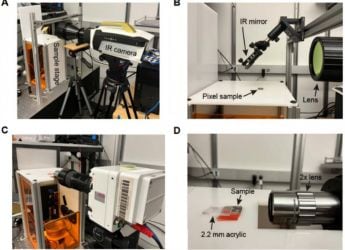- Home
- Mobiles
- Mobiles News
- Microsoft's Prototype Smartphone Case Doubles Up as an E Ink Display
Microsoft's Prototype Smartphone Case Doubles Up as an E-Ink Display

Technology giant Microsoft and Austrian researchers have developed FlexCase - a prototype smartphone case that acts as a secondary e-ink display.
Microsoft Research and the University of Applied Sciences Upper Austria created the device that can act as an extended touchscreen to mobile devices and can power the device, Tech Times reported.
The smartphone case prototype can be flexed, tapped and twisted to control the main display.
The FlexCase works similar to YotaPhone - the world's first smartphone that had two screens released in 2013. It had an e-ink display on the back and a regular LCD front screen.
FlexCase allows users to interact with their phone in many ways. Its cover can be used as an extended visual clipboard that makes searching and typing easier.
By simply bending the cover forward or backward, users can easily flip pages, zoom in and out, navigate pages and even rotate maps.
Everyday motions can generate enough energy to be converted to electricity.
The piezoelectric effect (push or pull) can be of use within multiple applications, including electronic frequency generation, detection and production of sound.
The same principle is applied on the FlexCase prototype that uses piezoelectricity current to power the device.
By allowing users to stretch, compress, flex, tap and twist the cover, an appropriate amount of energy is being applied that generates an electrical charge to operate the device.
The FlexCase is scheduled to be presented at the "Computer-Human Interaction Conference" in May in California.
Get your daily dose of tech news, reviews, and insights, in under 80 characters on Gadgets 360 Turbo. Connect with fellow tech lovers on our Forum. Follow us on X, Facebook, WhatsApp, Threads and Google News for instant updates. Catch all the action on our YouTube channel.
Related Stories
- Samsung Galaxy Unpacked 2025
- ChatGPT
- Redmi Note 14 Pro+
- iPhone 16
- Apple Vision Pro
- Oneplus 12
- OnePlus Nord CE 3 Lite 5G
- iPhone 13
- Xiaomi 14 Pro
- Oppo Find N3
- Tecno Spark Go (2023)
- Realme V30
- Best Phones Under 25000
- Samsung Galaxy S24 Series
- Cryptocurrency
- iQoo 12
- Samsung Galaxy S24 Ultra
- Giottus
- Samsung Galaxy Z Flip 5
- Apple 'Scary Fast'
- Housefull 5
- GoPro Hero 12 Black Review
- Invincible Season 2
- JioGlass
- HD Ready TV
- Laptop Under 50000
- Smartwatch Under 10000
- Latest Mobile Phones
- Compare Phones
- Jolla Phone
- Realme P4x 5G
- OnePlus Ace 6T
- Nubia Flip 3
- Nubia Fold
- OPPO A6x 5G
- Samsung Galaxy Z TriFold
- Poco F8 Ultra
- Asus ProArt P16
- MacBook Pro 14-inch (M5, 2025)
- OnePlus Pad Go 2
- Poco Pad M1
- Just Corseca Skywatch Pro
- Honor Watch X5
- Acerpure Nitro Z Series 100-inch QLED TV
- Samsung 43 Inch LED Ultra HD (4K) Smart TV (UA43UE81AFULXL)
- Asus ROG Ally
- Nintendo Switch Lite
- Haier 1.6 Ton 5 Star Inverter Split AC (HSU19G-MZAID5BN-INV)
- Haier 1.6 Ton 5 Star Inverter Split AC (HSU19G-MZAIM5BN-INV)

















